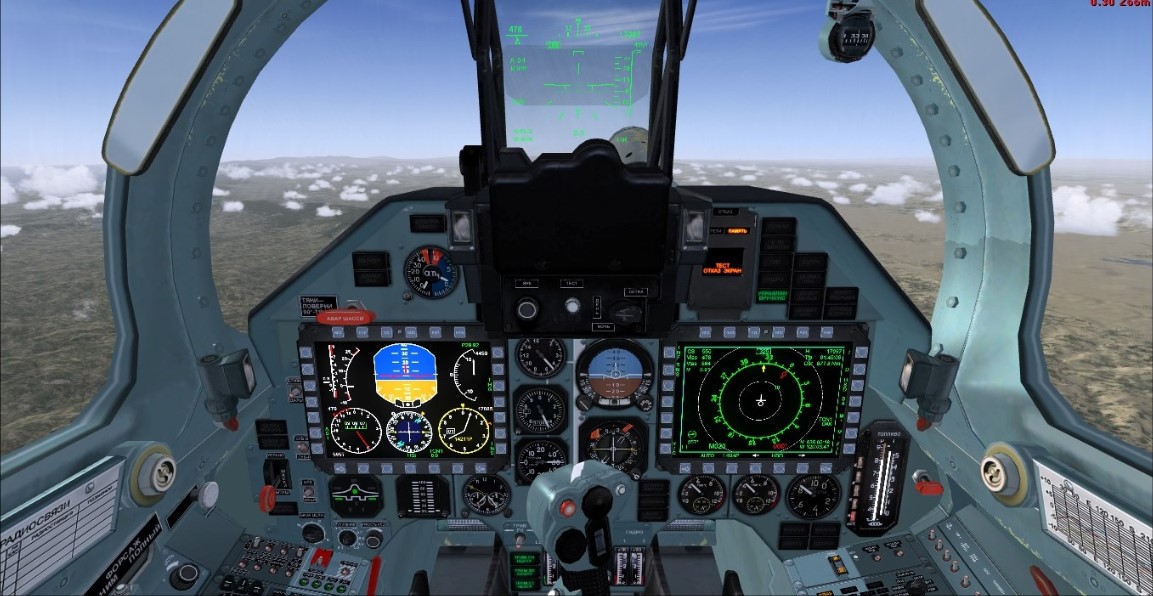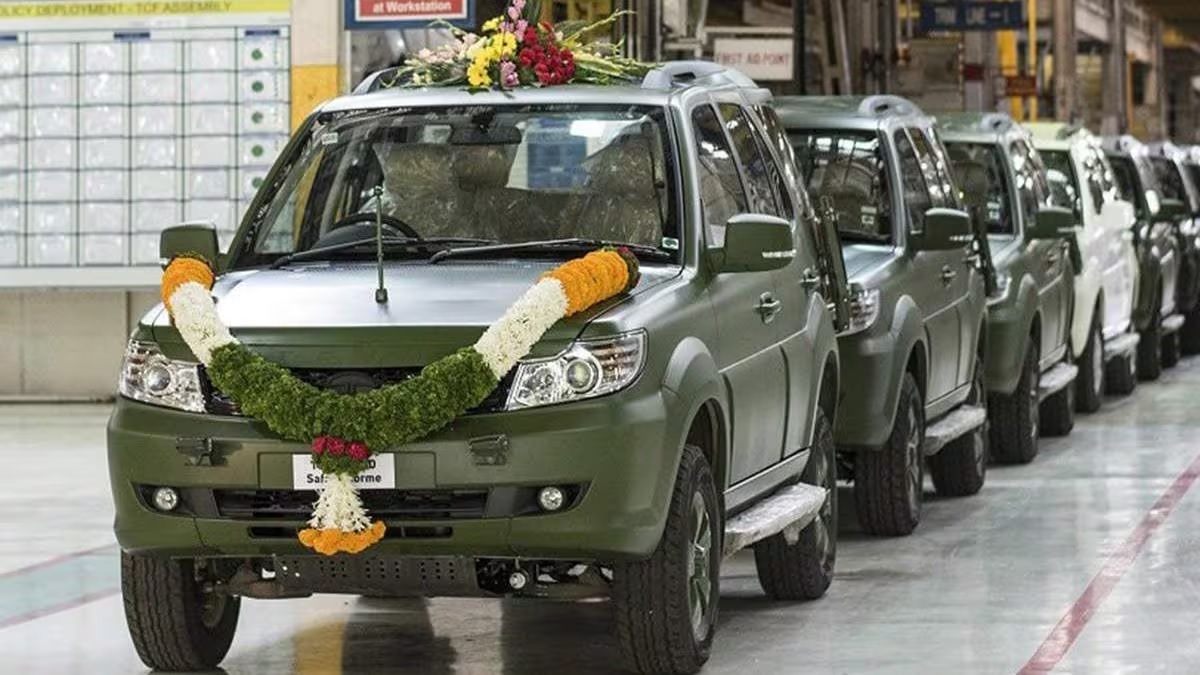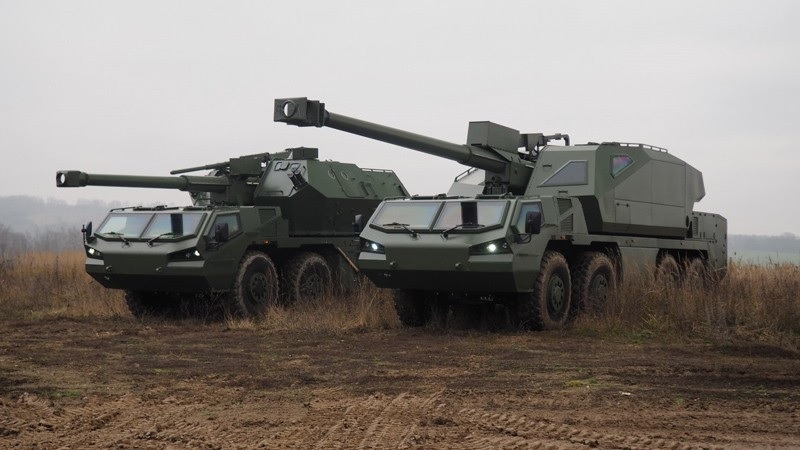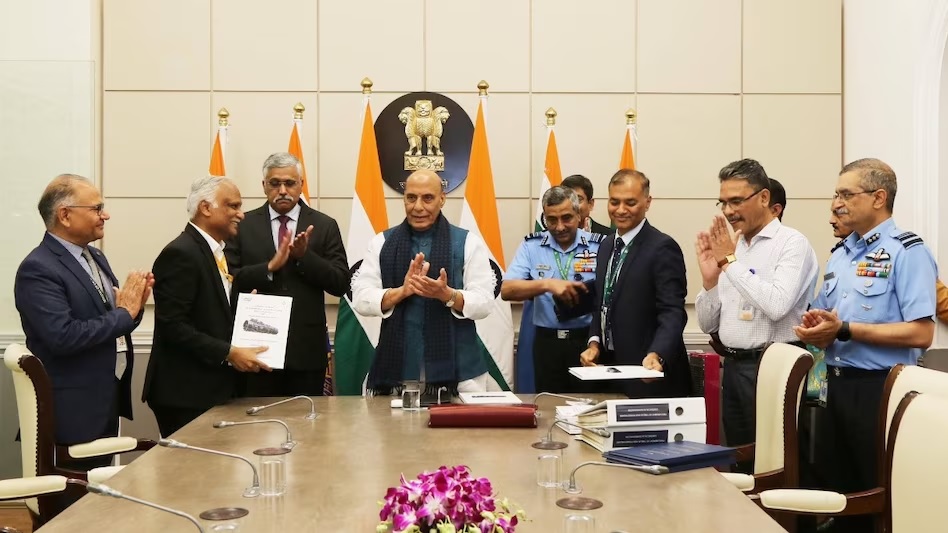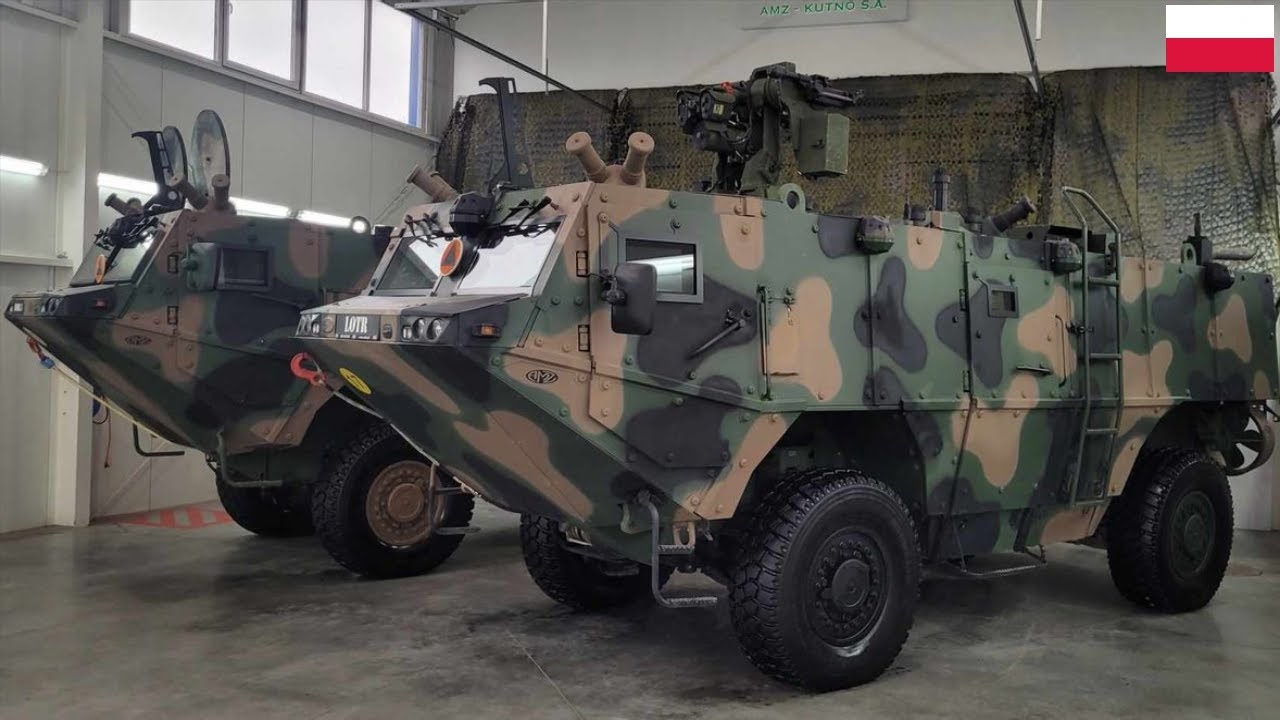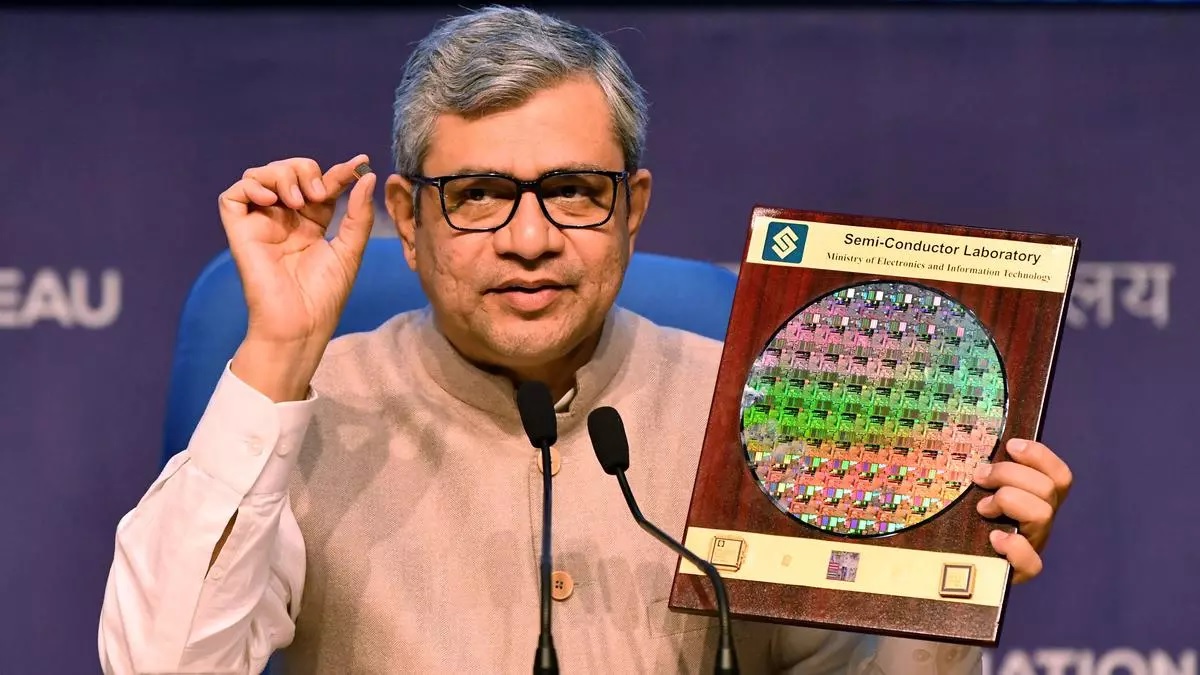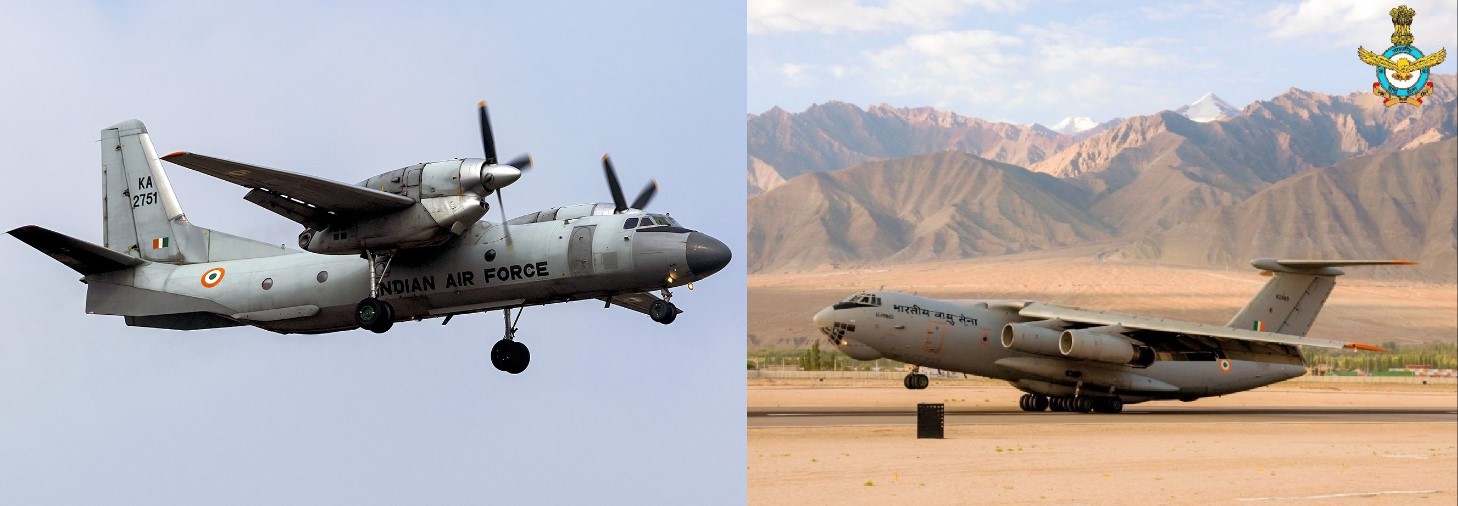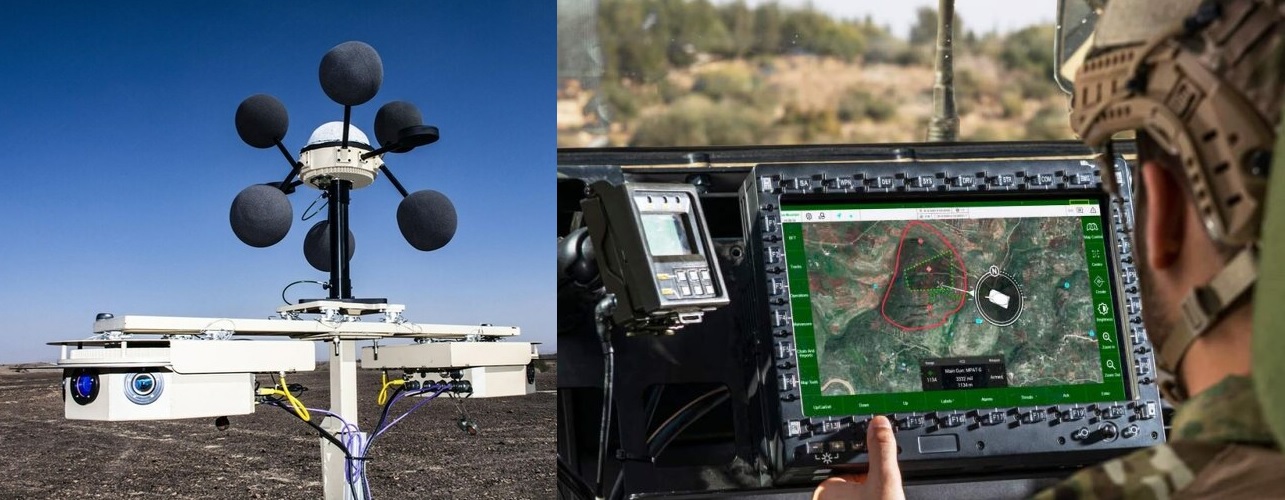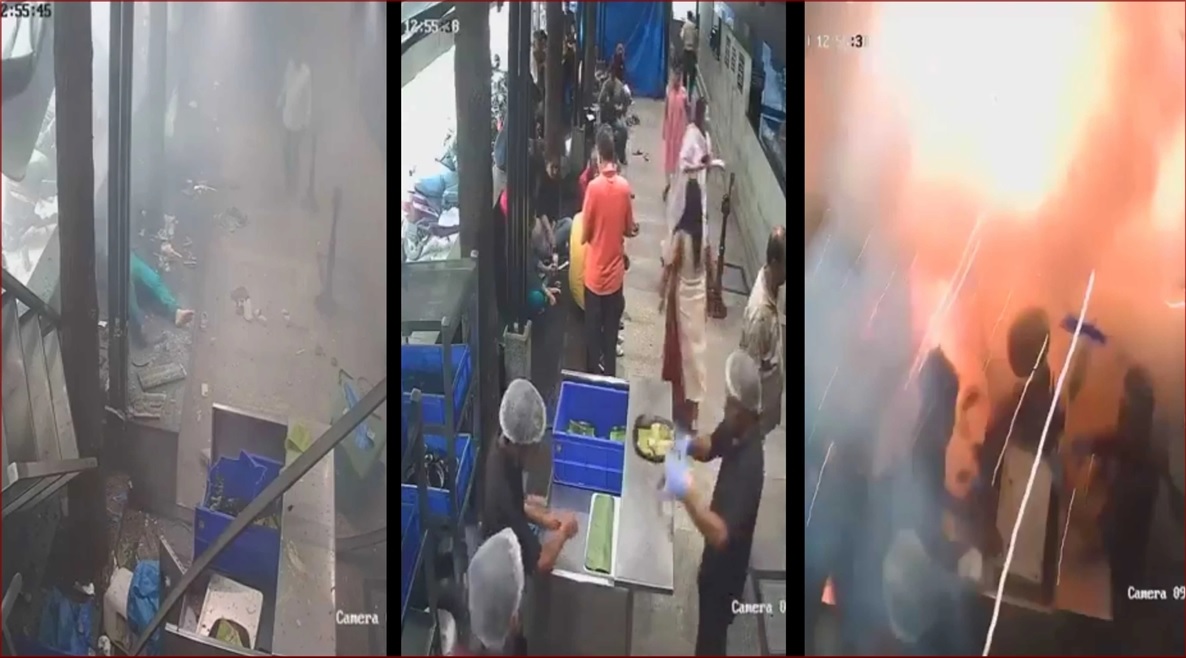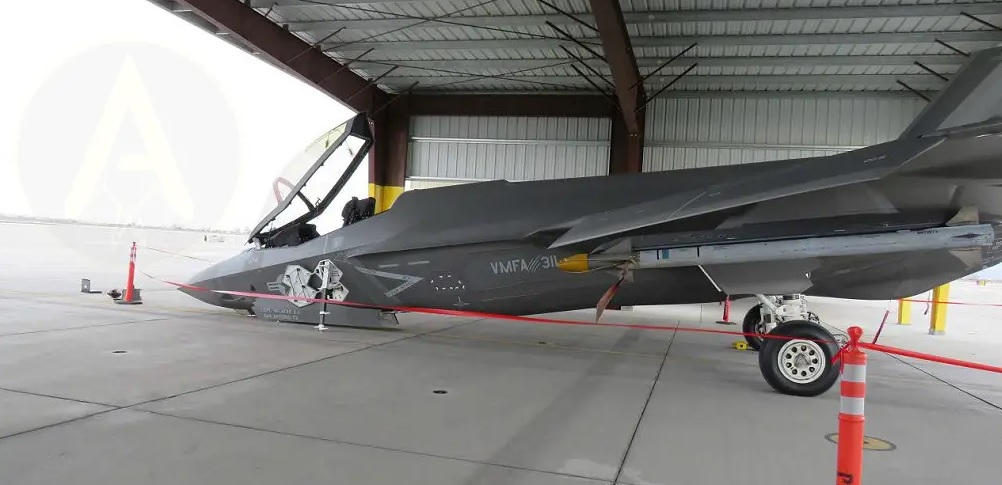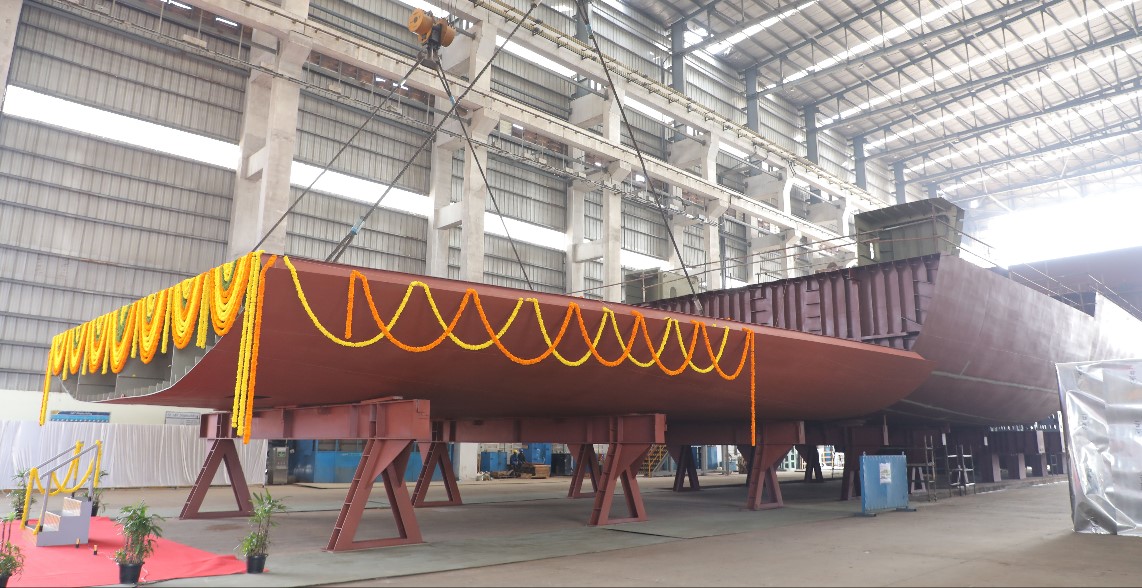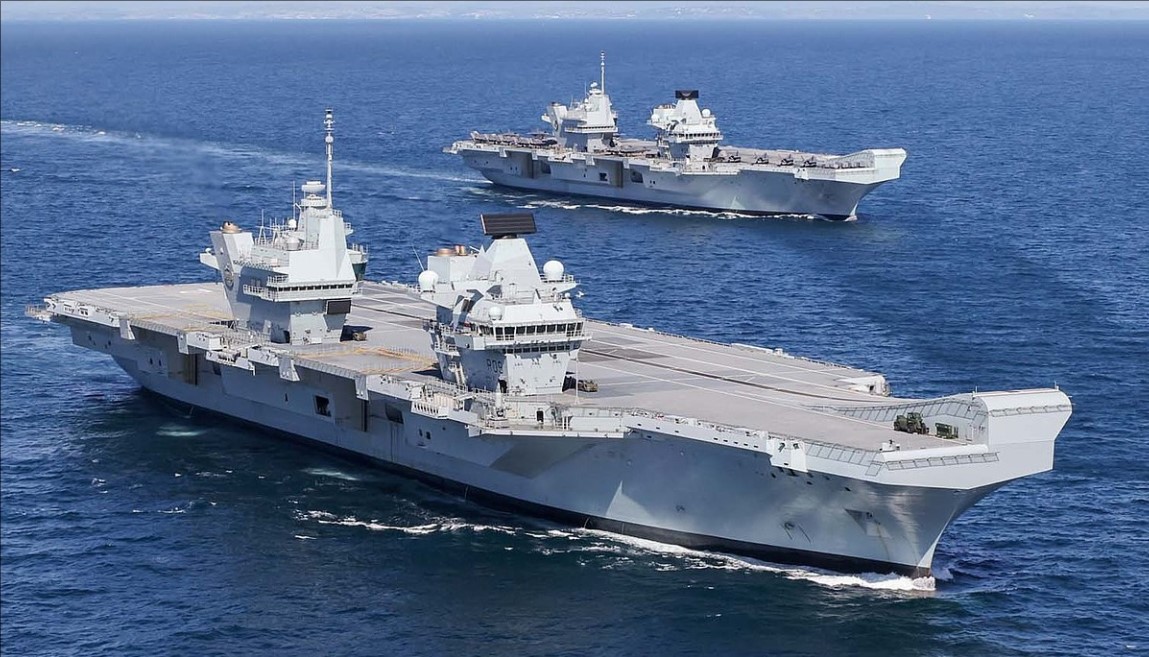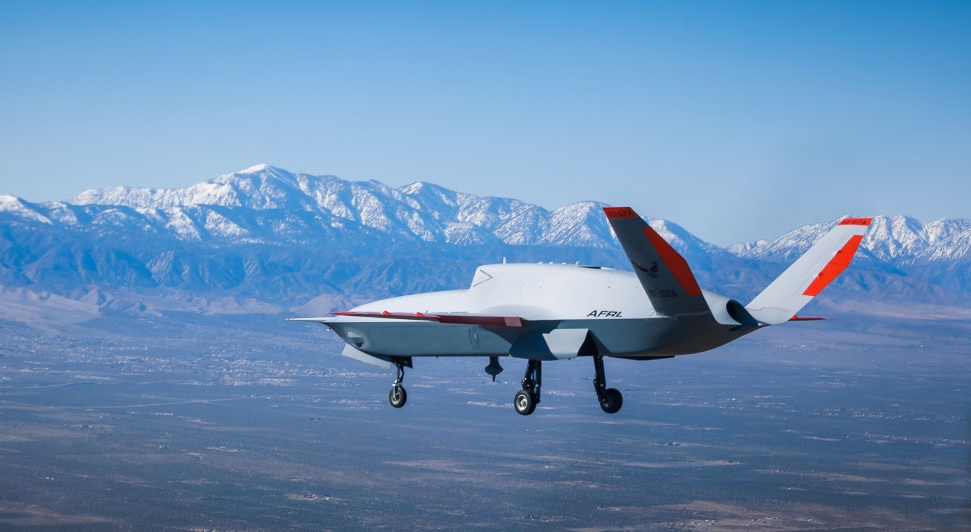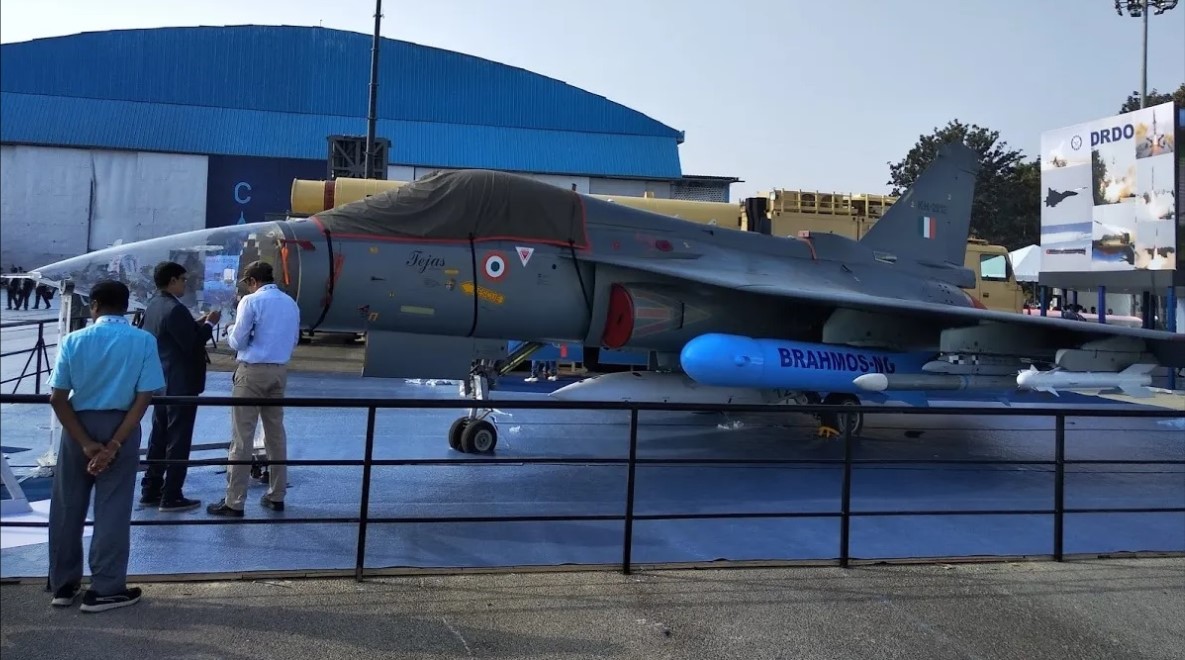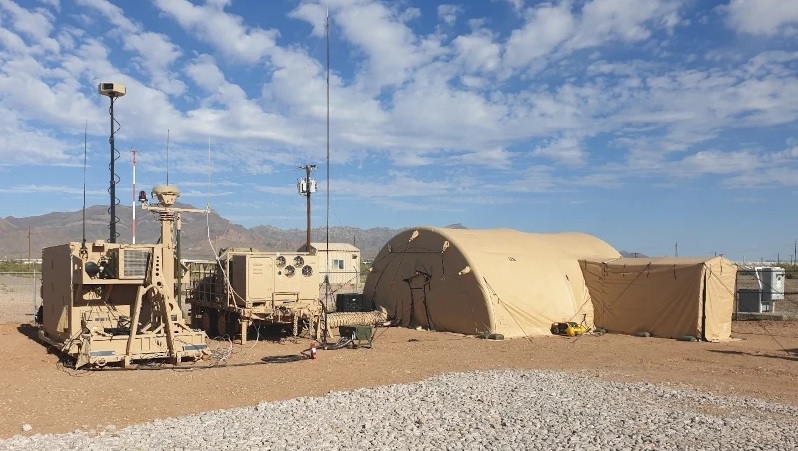India
Defense News ,India :- The Ministry of Defence has signed a contract with an Indian firm to upgrade the simulators of the Su-30 MKI fighter aircraft of the Indian Air Force."Led by MSME, this upgrade will incorporate all indigenous weapons and capabilities, enhancing operational training for IAF pilots," an official statement said.The Su-30 MKI fighter jets are the backbone of the Indian Air Force's fighter fleet and over 270 of them have been inducted in to the force.The simulators will help in further improving the training of pilots.Earlier, the Ministry of Defence (MoD) signed five major capital acquisition contracts worth Rs 39,125.39 crore on Friday in Delhi.The contracts were exchanged in the presence of Defence Minister Rajnath Singh and Defence Secretary Giridhar Aramane.Out of the five contracts, one was with Hindustan Aeronautics Limited for procurement of Aero-engines for MiG-29 aircraft, second with Larsen an Toubro Limited for procurement of Close-in Weapon System (CIWS) and procurement of High-Power Radar (HPR) and two with BrahMos Aerospace Private Limited (BAPL) for procurement of BrahMos missiles and procurement of Ship borne BrahMos system for the Indian Defence Forces.These deals will further strengthen indigenous capabilities, save foreign exchange and reduce dependency on foreign-origin equipment manufacturers in the future.The contract for RD-33 Aero Engines for MiG-29 aircraft has been signed with Hindustan Aeronautics Limited (HAL) at a cost of Rs 5,249.72 crore. These aeroengines will be produced by the Koraput Division of HAL.The contract for procurement of CIWS has been signed with Larsen and Toubro Limited at a cost of Rs 7,668.82 crore.The contract for procurement of HPR has also been signed with Larsen and Toubro Limited at a cost of Rs 5,700.13 crore. It will replace existing long-range radars of lAF with modern Active Aperture Phased Array based HPR with advanced surveillance features.The contract for procurement of BrahMos missiles has been signed with BrahMos Aerospace Private Limited (BAPL) at a cost of Rs 19,518.65 crore.These missiles would be utilized to meet combat outfit and training requirements of the Indian Navy.This project is likely to generate employment for nine lakh man-days in Joint Venture entity and around 135 lakh man-days in ancillary industries (including MSMEs) in the country.
Read More → Posted on 2024-03-02 07:09:38India
Defense News ,India :- The Indian Army has recently released a tender for the acquisition of 4x4 'light vehicles' designed for general service (GS) duties.Outlined in the request for proposal (RFP) issued on February 29, the Indian Army aims to acquire 1,054 light vehicles falling under the 'Buy (Indian)' category. This procurement category mandates that a minimum of 50% of the purchased product must be of indigenous origin.The specified light vehicles must possess a gross weight exceeding 2,500 kg and should demonstrate mobility in challenging terrains such as hilly, high-altitude, cross-country, and desert landscapes. The primary application of these light vehicles will be the swift deployment of small teams in both conventional and counter-insurgency operations.As per the RFP guidelines, the length of the procured vehicles should be 4,450 mm, accompanied by a width of 1,690 mm, a height of 1,680 mm, and a ground clearance of 180 mm.To ensure versatility, the procured vehicles must operate efficiently in temperatures ranging from -15°C to +45°C. Additionally, they must feature a manual transmission with a minimum of five forward and one reverse gear, coupled with a selectable 4x4 or 4x2 transmission system. The 4x4 option should include selectable high and low gear ratios, and a differential lock facility on the rear axle is also mandated by the RFP.
Read More → Posted on 2024-03-02 07:05:43World
Defense News ,Netherland :- The Dutch Ministry of Defense has finalized an order for nine DITA self-propelled howitzers destined for Ukraine, in a collaboration with two Czech defense contractors. While the specifics of the order remain undisclosed, the 155mm guns are set to bolster Ukraine's military capabilities significantly.Described as a modern firing system with the capacity to target locations tens of kilometers away, the DITA howitzer addresses a critical need for Ukraine, according to the Dutch defense ministry. Manufactured by Excalibur Army and unveiled in 2021, this particular gun has yet to be ordered by any other country, making it a distinctive addition to Ukraine's arsenal.Ukraine's interest in the wheeled gun dates back to 2022, with discussions between Kyiv officials and Czech representatives occurring in May of the same year. The DITA, an advancement over the 152mm DANA, boasts twice the range at an impressive 39 kilometers (24 miles). Notably, its greater automation allows for a reduced crew size, with just two operators compared to its predecessor's three.With a starting rate of fire at six rounds per minute, the DITA maintains efficiency even during prolonged firing, dropping to five rounds per minute. The self-propelled howitzer carries 40 artillery rounds and can swiftly transition to traveling mode in just 45 seconds. Mounted on an 8x8 Tatra truck, it can travel at speeds of up to 90 kilometers (56 miles) per hour on paved roads, covering distances of up to 600 kilometers (373 miles).Enhanced features include an uncrewed turret designed for automatic reloading and a sophisticated fire control system. This system offers the flexibility to choose munitions based on real-time data received from aerial drones, providing an advanced level of adaptability in combat scenarios. The acquisition of the DITA self-propelled howitzers marks a significant step forward for Ukraine in bolstering its defense capabilities with cutting-edge technology.
Read More → Posted on 2024-03-01 16:10:13India
Defense News ,India :- The Ministry of Defence (MoD) on Friday signed five capital acquisition contracts worth Rs 39,125.39 crore, the government said in a release.Out of the five contracts, one was with Hindustan Aeronautics Limited for procurement of Aero-engines for MiG-29 aircraft, two with Larsen & Toubro Limited for procurement of Close-in Weapon System (CIWS) and procurement of High-Power Radar (HPR) and two with BrahMos Aerospace Private Limited (BAPL) for procurement of BrahMos missiles and procurement of Ship borne BrahMos system for the Indian Defence Forces."These deals will further strengthen indigenous capabilities, save foreign exchange and reduce dependency on Foreign Origin Equipment Manufactures in future," the official release stated.The contract for RD-33 Aero Engines for MiG-29 aircraft has been signed with HAL at a cost of Rs 5,249.72 crore. These aeroengines will be produced by the Koraput division of HAL. These Aero Engines are expected to fulfill the need of Indian Air Force (IAF) to sustain the operational capability of the MiG-29 fleet for the residual service life.The aero-engines will be manufactured under Transfer of Technology (TOT) license from the Russian OEM. "The programme will focus on indigenisation of several high value critical components, which would help increase the indigenous content of future Repair and Overhaul (ROH) tasks of RD-33 aero-engines," it said.The contract for procurement of CIWS has been signed with Larsen & Toubro Limited at a cost of Rs 7,668.82 crore, highlighted the release. CIWS will provide terminal Air Defence to select locations of the country. The project will boost and encourage active participation of Indian aerospace, defence and associated industries including MSMEs. "The direct and indirect employment generated by this project would be approximately average of 2,400 persons/ year over the period of five years," it said.The contract for procurement of HPR has also been signed with Larsen & Toubro Limited at a cost of Rs 5,700.13 crore. It will replace existing long-range radars of lAF with modern Active Aperture Phased Array based HPR with advanced surveillance features.The contract for procurement of BrahMos missiles has been signed with BrahMos Aerospace Private Limited (BAPL) at a cost of Rs 19,518.65 crore. "These missiles would be utilized to meet combat outfit and training requirements of Indian Navy," the government highlighted.This project is likely to generate employment of nine lakh man-days in Joint Venture entity and around 135 lakh man-days in ancillary industries (including MSMEs) of the country, it stated.The contract for Procurement of Ship borne BrahMos system has also been signed with BrahMos Aerospace Private Limited (BAPL) at a cost of Rs 988.07 crore."This system is the Indian Navy's primary weapon for maritime strike operations fitted onboard various frontline warships. The system is capable of hitting land or sea targets from extended ranges with pinpoint accuracy at supersonic speeds. The project is likely to generate employment of around 60,000 man-days over a period of 7-8 years," the press release highlighted.
Read More → Posted on 2024-03-01 16:02:57India
Defense New ,India :- In a recent milestone for the Indian Army's operational prowess, the Annual Eastern Command Anti-Tank Guided Missile (ATGM) field firing exercise unfolded at West Bengal's Teesta field firing range. Executed under the Trishakti Corps, this event showcased the army's commitment to precision and effectiveness in anti-tank warfare, firing over 260 missiles with the overarching objective of achieving "one missile one tank."A noteworthy development during the exercise was the debut of Mahindra's Anti-Tank Guided Missile (ALSV), marking its firing capacity for the first time. This missile signifies a paradigm shift in armored mobility and battlefield versatility, providing enhanced protection and firepower in high-threat environments.Enhancing ALSVs with ATGMs: A Tactical Edge in WarIntegrating Anti-Tank Guided Missiles (ATGMs) onto the Mahindra Armored Light Specialist Vehicle (ALSV) holds the potential to significantly boost its anti-armor capabilities, offering a tactical advantage in war scenarios. Here's a breakdown of the key benefits:1. Increased Firepower: ATGMs extend the ALSV's combat reach, enabling the destruction of heavily armored enemy tanks at significant distances.2. Precision Strikes: ATGMs offer superior accuracy, allowing the ALSV to target specific weak points of enemy tanks for maximum damage.3. Ambush Potential:With speed and mobility, an ATGM-equipped ALSV can conduct surprise hit-and-run attacks against enemy armor, making them harder to counter.4. Force Multiplier:The ALSV's versatility as a personnel carrier, combined with ATGM firepower, makes it a formidable force multiplier, capable of fulfilling multiple battlefield roles with enhanced anti-tank capabilities.Learning from History: Parallels with the 1965 WarExamining historical context, particularly the 1965 India-Pakistan War, provides insights into the effective use of anti-tank weapons. Drawing parallels between Abdul Hamid's actions with a recoilless gun (RCL) mounted on a Jeep and modern armored vehicles equipped with ATGMs, several factors emerge:1. Mobility:The Mahindra Armored Light Specialist Vehicle, being a light and agile platform, offers greater mobility than traditional tanks. Its ability to traverse varied terrains quickly and access confined spaces can be advantageous for hit-and-run tactics.Abdul Hamid's use of a Jeep-mounted RCL gun showcased the importance of mobility, allowing for strategic positioning and surprise attacks on enemy tanks.2. Flexibility and Adaptability:Anti-tank missiles provide a flexible and adaptable solution to engage armored threats. They can be fired from a variety of platforms, including vehicles, helicopters, and infantry positions. In the 1965 war, the adaptability of Abdul Hamid's Jeep-mounted RCL gun demonstrated the effectiveness of using unconventional platforms for anti-tank warfare.3. Cost-Effectiveness:Light armored vehicles with anti-tank missiles are often more cost-effective than heavy tanks. They offer a balance between firepower and affordability, allowing for the deployment of a larger number of such vehicles. Abdul Hamid's use of a Jeep-mounted RCL gun highlighted the resourcefulness of employing cost-effective solutions to counter armored threats.4. Stealth and Surprise: Light armored vehicles can operate more stealthily than tanks, utilizing natural cover and terrain to approach targets unnoticed. This element of surprise can be crucial in engaging enemy armor. Abdul Hamid's actions exemplified the importance of surprise, as he used the element of stealth to get close to Pakistani tanks and destroy them with the RCL gun.5. Urban Warfare:Light armored vehicles are better suited for urban warfare scenarios, where the ability to navigate through narrow streets and respond quickly to changing situations is crucial.Abdul Hamid's use of a Jeep-mounted RCL gun in the 1965 war showcased the adaptability of such platforms in varied combat environments.While the technology and tactics have evolved since the 1965 war, the principles of mobility, adaptability, cost-effectiveness, and surprise remain relevant in modern anti-tank warfare. The Mahindra Armored Light Specialist Vehicle, equipped with anti-tank missiles, embodies these principles and can offer unique advantages in certain operational contexts.
Read More → Posted on 2024-03-01 15:59:48World
Defense News ,Poland :- Poland has recently signed a pivotal agreement with mobility developer AMZ-Kutno, solidifying plans to provide the army with 286 Kleszcz light armored reconnaissance personnel carriers. This strategic move follows an extensive study conducted by Warsaw's military science organizations and the National Center for Research and Development. The study aimed to equip the land forces with an advanced reconnaissance system, drawing inspiration from the Soviet-made Bóbr vehicles and their contemporary versions.The Kleszcz vehicles, once deployed, are anticipated to elevate the level of crew protection during intelligence missions on the battlefield. Deliveries are scheduled to take place from 2025 through 2035, marking a significant milestone in modernizing the Polish army.Deputy Prime Minister Władysław Kosiniak-Kamysz emphasized the contract as a confirmation of bolstering defense capabilities and expressed a commitment to transform the Polish Armed Forces. He highlighted the Kleszcz as a crucial asset for reconnaissance, emphasizing the importance of having effective "eyes and ears" on the battlefield, particularly in light of the lessons learned from the conflict in Ukraine.The Kleszcz vehicle itself is a 4×4 wheeled system, boasting a five-member crew and a diesel engine with over 300 horsepower. With a maximum speed of 100 kilometers (62 miles) per hour, the 6.9-meter (22-foot) vehicle can be integrated with a NATO-standard ballistic and mine-resistant chassis. The specialized armor of the Kleszcz is complemented by a laser radiation warning system, a remote-controlled weapons module, and a smoke grenade launcher. Depending on combat requirements, it can also be equipped with a 30-millimeter automated cannon turret or anti-tank guided missiles.The origins of the Kleszcz trace back to its introduction by the Polish government in 2018. Two years later, testing commenced, focusing on the vehicle's optoelectronic and radar equipment. The conclusive phase of preliminary trials wrapped up in the same year.Looking beyond the Kleszcz, Poland's military ambitions extend into 2023 when the procurement of light reconnaissance vehicles, wheeled armored personnel carriers, and heavy infantry combat vehicles was approved. The initiative will unfold through three separate contracts for each vehicle type. Reconnaissance vehicle deliveries are set to begin this year and continue until 2030, while the armored carriers are expected to be delivered by 2035. Specific details regarding the shipment of "several hundred" heavy infantry fighting vehicles have not been disclosed at this time.
Read More → Posted on 2024-03-01 15:45:48India
Defense News ,India ,U.S :- Pixxel, a prominent figure in the space technology sector, has achieved a notable milestone by clinching the top prize in the DIU & iDEX (India) Maritime ISR Challenge during the prestigious INDUS-X Summit. This recognition highlights Pixxel's groundbreaking proposal, which utilizes hyperspectral imagery for detecting ocean surface oil spills, effectively addressing critical environmental and maritime security concerns.The Maritime ISR Challenge, a key component of the INDUS-X Summit, gathered industry leaders, innovators, and defense experts to explore advanced solutions for enhancing maritime intelligence, surveillance, and reconnaissance capabilities. Pixxel's innovative proposal stood out for its potential to revolutionize the detection and monitoring of oil spills, offering a proactive approach to environmental protection and maritime security.Pixxel's success in the challenge underscores its dedication to utilizing advanced technology and data analytics to tackle real-world challenges. Through the power of hyperspectral imagery, Pixxel aims to provide actionable insights and early detection capabilities to mitigate the environmental impact of oil spills and safeguard marine ecosystems.Apart from winning the Maritime ISR Challenge, Skip Maselli, Pixxel's Vice President of Public Sector, made substantial contributions to the summit by participating in a crucial panel discussion on 'Friend Shoring to Build Industrial Partnerships.' The panel focused on the significance of fostering collaborative partnerships and building supply chain resilience to drive innovation and accelerate industrial growth.Maselli's insights and expertise emphasized Pixxel's commitment to establishing strategic alliances and leveraging collective expertise to address complex challenges in the aerospace and defense sectors. By championing the concept of 'friend shoring,' Maselli highlighted the importance of nurturing symbiotic relationships and leveraging complementary strengths to drive sustainable growth and innovation.
Read More → Posted on 2024-03-01 15:06:52India
Defense News ,India :- In a significant move, the Union Cabinet has greenlit proposals for the establishment of three semiconductor units, attracting a massive investment of ₹1.26-lakh crore. Two of these cutting-edge units are slated for Gujarat, while the third will find its home in Assam. This development marks a pivotal moment for India, which is set to have four semiconductor units operational, with the first unit expected to begin supplying by the end of the year.The Tata group is set to play a pivotal role in this semiconductor venture, with two units earmarked for Dholera (Gujarat) and Morigaon (Assam). Simultaneously, CG Power will be establishing a unit in Sanand (Gujarat). Telecom Minister Ashwini Vaishnaw, in a post-Cabinet meeting press conference, revealed that the 'Bhommi poojan' for all three plants will occur shortly, followed by construction initiation within the next 100 days. Remarkably, the timeline for these projects aims to compress the usual 3-4 year construction period, showcasing an accelerated pace.Under the 'Development of Semiconductors and Display Manufacturing Ecosystem' program, these units will focus on producing chips for critical sectors such as defense, automobiles, and telecommunications. The government is extending substantial support, amounting to ₹76,000 crore, with ₹59,000 crore allocated specifically for these four plants.Tata Electronics Pvt Ltd is set to establish a semiconductor fab in collaboration with Taiwan's Powerchip Semiconductor Manufacturing Corp in Dholera, Gujarat. This ambitious project, requiring an investment of ₹91,000 crore, will produce high-performance compute chips, utilizing 28 nm technology for applications ranging from electric vehicles to telecom and defense.Meanwhile, Tata Semiconductor Assembly and Test Pvt Ltd (TSAT) will initiate a semiconductor unit in Morigaon, Assam, with an investment of ₹27,000 crore. This facility will have a daily capacity of 48 million units, catering to automotive, electric vehicles, consumer electronics, telecom, and mobile phones.CG Power, in collaboration with Renesas Electronics Corp and Stars Microelectronics of Thailand, is set to establish a unit in Sanand, Gujarat, with an investment of ₹7,600 crore. This semiconductor unit will focus on manufacturing 15 million chips for consumer, industrial, automotive, and power applications.N Chandrasekaran, Chairman of Tata Sons, emphasized the critical role of semiconductors in the era of AI-led digitization. By 2030, the global semiconductor industry is anticipated to reach $1 trillion, with Indian demand crossing $110 billion. This move positions India strategically in the global semiconductor landscape, reducing dependency on countries like Taiwan.The Cabinet's decision aligns with the Modi government's vision to position India as a key player in the semiconductor manufacturing domain. The semiconductor ecosystem in India is taking shape, bolstering the country's capabilities in chip design and fabrication. The advancements are expected to accelerate employment generation across various sectors, including downstream automotive, electronics manufacturing, telecom, and industrial sectors.Notably, financial incentives are set to propel these projects forward, with Tata receiving ₹33,998 crore for the Dholera project, ₹10,225 crore for the Morigaon project, and CG Power securing ₹3,501 crore for the Sanand project. With a complete value chain encompassing design, fabrication, and assembly and testing, these three plants are poised to create 26,000 direct and 1 lakh indirect employment opportunities. Proposals from eight states to establish similar semiconductor plants are currently under consideration, promising a significant boost in production and a positive impact on consumer products.
Read More → Posted on 2024-03-01 15:02:36India
Defense News ,India :- In an exclusive interview with Bharat Shakti, Air Chief Marshal VR Chaudhuri delves into the Indian Air Force's ambitious plans to revamp its crucial airlift capabilities. The recent unveiling of the Medium Transport Aircraft (MTA) tender signals a pivotal shift in the IAF's strategy, aiming to retire aging Soviet-era aircraft like the An-32 and IL-76 by the early 2030s.Pursuing the Ideal AirlifterThe Indian Air Force faces the challenge of selecting a versatile workhorse that can seamlessly cater to both strategic and tactical needs. With a cargo capacity requirement ranging from 25 to 40 tons, the IAF finds itself at a crossroads between traditional 'medium' and 'heavy' airlifter categories.This ambiguity, coupled with the roster of contenders, sheds light on potential IAF priorities:1. Embraer C-390M (Brazil): Positioned at the lower end of the payload spectrum, the C-390M may signify a preference for a larger number of tactical airlifters suited for challenging terrains, emphasizing affordability.2. Airbus A400M (Europe): Boasting superior payload capabilities, the A400M suggests a shift towards fewer, but more substantial, strategic airlifters focused on extending operational reach.3. Lockheed Martin C-130J (USA): Despite being a proven platform, the C-130J's capacity shortfall implies its candidacy hinges on a potential revision of the payload target by the IAF.Beyond Payload: Crucial Considerations for the IAFThe final decision on the MTA selection will not hinge solely on payload capacity. Other pivotal factors in the IAF's decision-making include:1. Operating Range: Given India's expansive geography, an aircraft with substantial range, even factoring in mid-air refueling, is imperative for strategic interests.2. Fuel Efficiency: In the current budgetary climate, lower operational costs, favoring platforms like the fuel-efficient C-390M, play a pivotal role.3. Life-Cycle Costs: The IAF will scrutinize maintenance, upgrade potential, and long-term ownership costs beyond the initial acquisition phase.4. 'Make in India' Factor: Domestic production requirements may significantly influence the final decision, potentially favoring a contender willing to establish a substantial manufacturing base in India.ConclusionThe MTA tender transcends mere procurement, serving as a reflection of the evolving doctrines within the IAF. The ultimate choice will reveal whether India prioritizes:Tactical Flexibility: Favoring a larger fleet of smaller aircraft to navigate diverse and challenging terrains.Strategic Reach: Opting for a smaller number of larger aircraft capable of projecting power over extensive distances swiftly.Regardless of the chosen path, the MTA program will profoundly shape the IAF's airlift capabilities and strategic posture for decades to come.
Read More → Posted on 2024-03-01 14:57:12World
Defense News ,U.S :- The US Army has recently granted a $19.4-million contract to Logos Technologies, a segment of Elbit Systems, for the delivery, maintenance, and operation of Serenity hostile fire detection systems.Serenity employs a combination of acoustic and electro-optical sensors to identify heavy weapons and explosive detonations, accurately detecting activities within a 10-kilometer (6.2 miles) radius in any direction.This standalone system is versatile, mountable on aerostats and towers, and can seamlessly integrate with wide-area motion imagery (WAMI) for real-time surveillance spanning a 200-square-kilometer (77 square miles) area.Upon detecting potential threats, Serenity promptly alerts a response force, facilitating rapid and effective neutralization. Logos Technologies emphasizes that the system generates fewer false positives compared to conventional single-sensor hostile fire detection technologies.Doug Rombough, Logos Technologies' Vice President of Business Development, explained, “Serenity can cue the WAMI system to a specific area of interest, such as the location of an enemy mortar team. The WAMI system can then track their movements across the battlefield and even 'go back in time' to discover their initial staging area.”Beyond the US Army, Logos Technologies notes that other military partners have recognized the value of Serenity for enhancing their hostile fire protection capabilities. Rombough expressed interest in developing a rapidly deployable version for international forces based on the system's success with US forces.Simultaneously, the US Department of Defense's Army Research Laboratory is actively researching ways to transform Serenity into a more compact solution. The goal is to deploy it with a gyrocopter, utilizing a surrogate unmanned aircraft system for future applications, as part of ongoing efforts to advance military technology.
Read More → Posted on 2024-03-01 14:45:53Space & Technology
Technology News ,India :- The Indian Institute of Technology, Mandi, is making groundbreaking strides in quantum computing by developing a first-of-its-kind indigenous room-temperature quantum computer that utilizes photons for high-speed calculations, as revealed by officials.Part of the National Quantum Mission, this unique computer possesses the ability to analyze data and propose solutions with an impressive 86% accuracy, all without the reliance on traditional algorithms. Quantum computing, an emerging technology, leverages the principles of quantum mechanics to solve complex problems beyond the capabilities of classical computers.Chairperson of the Center for Quantum Science and Technologies (CQST) at IIT-Mandi, C S Yadav, stated, “We are constructing a room-temperature optical quantum computer capable of solving feature learning and classification problems instantly. With a sophisticated user interface, quantum simulator, and processing capabilities, our computer will function as a graphics processor (GPU), seamlessly handling inputs like videos or photographs.”The quantum computer will extract models to elucidate hidden dynamics within input data and provide output as a quantum live feed. Yadav highlighted the unique approach, stating, “Composing a quantum algorithm is tedious. Yet our computer will mirror the inquisitive mind of a scientist, swiftly suggesting an approximate theoretical model for unknown big data with an 86% accuracy, all without relying on algorithms.”While acknowledging other players like Google and IBM in the quantum computing field, Yadav emphasized their objective to develop a photon-based quantum computer at room temperature, in contrast to the superconducting Josephson junction qubit-based systems that require extremely low temperatures.Explaining the technology, Yadav stated that the room-temperature optical quantum computer would use light for fast calculations, employing quantum bits (qubits) to exist in multiple states simultaneously for rapid processing. The system is designed to update itself and erase memory using a special gel.The team at IIT-Mandi is focused on scaling up the quantum computing system from handling 16 tasks to 1,024 tasks simultaneously. Key components, including a single photon source, a phase-sensitive single-photon avalanche diode, and a multipurpose coincidence counter, are being developed to high levels of reliability and effectiveness.IIT-Mandi Director Laxmidhar Behera expressed optimism about the impact of the Center for Quantum Science and Technologies, stating, “Through the National Quantum Mission, we are advancing the field with groundbreaking innovations aimed at enhancing feature learning and classification capabilities across genetics, astrophysics, finance, and weather forecasting. By collaborating with startups and establishing a robust supply chain, we aim to commercialize these components locally, fostering indigenous innovation and aligning with the aspirations of the National Quantum Mission.”
Read More → Posted on 2024-03-01 14:36:26India
Defense News ,India :- In a shocking incident today, a bomb blast at The Rameshwaram Cafe in Bengaluru's Kundalahalli left nine people injured. Karnataka Chief Minister Siddaramaiah confirmed the incident to reporters, revealing that the blast was captured on CCTV.Initially, the police were in the process of determining the cause of the explosion at the popular restaurant. However, upon the arrival of a team from the National Investigation Agency (NIA), along with the bomb squad and forensics laboratory, the Chief Minister disclosed that an improvised explosive device (IED) was responsible for the attack.Siddaramaiah shared details with the press, stating, "There's information that around 12.30 pm, there was an explosion. And that there was a bag. The investigation is on... I am getting to know that it was an IED. The investigation is on."Tejasvi Surya, the BJP's Bangalore South MP, also took to social media (formerly Twitter) to provide insights. In a post on X, he mentioned speaking with the cafe owner, Sri Nagaraj, who informed him that the blast occurred due to a bag left by a customer, ruling out any cylinder explosion. Surya emphasized the need for clear answers from Chief Minister Siddaramaiah and described it as a clear case of a bomb blast. The injured individuals, numbering nine, were promptly treated at Brookfield Hospital and are reported to be out of danger, according to Karnataka Police chief Alok Mohan. The incident has raised concerns and heightened the urgency for a thorough investigation into the circumstances surrounding the bomb blast.
Read More → Posted on 2024-03-01 14:26:30India
Defense News ,India :- In a remarkable display of economic vigor, India's growth took a significant leap on February 29, propelled by the leap year. The second advance estimates, released on Thursday, revealed a robust Q3 GDP growth of 8.4%, surpassing consensus projections of 6.8%.For the fiscal year FY24, the growth rate is anticipated to conclude at 7.6%, attributing this success to the activation of private investments, a long-awaited participant stepping into the economic arena. This projected growth rate exceeds market and RBI estimates of 7%, providing the government with a favorable conclusion to its second term, despite challenges such as uneven rural recovery and a slightly subdued private consumption.In absolute figures, the real GDP is estimated at Rs 172.90 lakh crore, a notable increase from FY23's Rs 160.71 lakh crore. Q3 growth is pegged at Rs 43.72 lakh crore, reflecting a substantial rise from Rs 40.35 lakh crore in the previous year. Despite a modest sequential growth of 4.4%, the first nine months of FY24 witnessed an overall GDP growth of 8.2% over FY23.While the agriculture sector's growth remains sluggish at 1.2%, the industrial sector is thriving, with mining and manufacturing registering impressive growth rates of 8.4% and 10.3%, respectively. However, the services sector, although reporting overall growth, saw a significant slowdown in its major sub-segment, trade, hotels, and transport, which expanded at a rate of 6.8%, compared to 14.2% the previous year.In Q3, agriculture, forestry, and fishing faced a setback, contracting by 0.8%, primarily due to lower output of kharif crops. The industrial sector grew at 9.5%, a slight decrease from the 12.5% registered in Q2, attributed to an adverse base effect and a deceleration in volume expansion.On the supply side, six out of eight broad indicators witnessed lower sequential growth in Q3, yet outperformed the previous year. On the expenditure side, both investments and consumption played a crucial role in supporting government expenditure. Private consumption recorded a modest 3.5% growth during Q3, influenced by inflationary pressures on household budgets. In contrast, investments showcased a commendable 10.6% growth over the previous year, although sequential growth remained flat.Looking ahead, Nish Bhatt, Founder & CEO of Millwood Kane International, predicts that India will maintain its status as one of the world's fastest-growing economies. However, he suggests a potential near-term moderation due to the inflationary impact of food prices, geopolitical concerns, and the Red Sea crisis.
Read More → Posted on 2024-03-01 08:15:52World
Defense News ,U.S :- In January, an incident unfolded at a Nevada Navy installation involving a Marine fighter jet participating in Top Gun training. The F-35C Lightning II, assigned to the 3rd Marine Aircraft Wing’s Marine Fighter Attack Squadron 311, experienced a nose landing gear collapse while parked at Naval Air Station Fallon on Jan. 26.Confirmation of the incident was provided to Marine Corps Times by Marine spokesman Capt. Stephanie Leguizamon via email on Tuesday. Fortunately, there were no reported injuries, and the aircraft is slated to return to service after undergoing necessary repairs, according to Leguizamon.Naval Air Station Fallon, renowned for its association with Top Gun, is home to the prestigious Navy Fighter Weapons School, where advanced air combat maneuvering tactics and techniques are imparted.The mishap occurred post a routine training mission in support of the U.S. Navy’s Strike Fighter Tactics Instructor program. Images of the jet with its nose on the ground circulated on social media platforms in February, with The Aviationist being the first to report on the incident.
Read More → Posted on 2024-03-01 08:11:58India
Defense News ,India :- In a significant step towards bolstering its indigenous shipbuilding initiative, the Indian Navy celebrated the keel laying ceremony for the first Cadet Training Ship (Yard-18003) on February 29, 2024, at M/s L&T Shipyard, Kattupalli. Rear Admiral Ravi Kumar Dhingra, Flag Officer Tamil Nadu and Puducherry Area, presided over the ceremony, accompanied by Rear Admiral G K Harish, AVSM, VSM (Retd), Head Shipbuilding Business at L&T, and other dignitaries from the Indian Navy and M/s L&T.The contract for the design and construction of three Cadet Training Ships was formalized between the Ministry of Defence (MoD) and M/s L&T on March 7, 2023. These ships are dedicated to training officer cadets at sea post their initial shore-based training, and they will also extend training opportunities to cadets from friendly foreign countries. This move aligns with the Indian Navy's commitment to 'Aatmanirbhar Bharat' (Self-reliant India) and the 'Make in India' initiatives of the Government of India.The keel laying ceremony is a crucial tradition in shipbuilding, representing the formal initiation of the ship's construction and marking the laying of its structural foundation. This milestone underscores the Indian Navy's dedication to fostering domestic shipbuilding capabilities, reducing reliance on foreign imports, and enhancing self-reliance in maritime defense capabilities.The Cadet Training Ships are poised to play a pivotal role in fortifying the Indian Navy's training infrastructure, facilitating the grooming of future naval officers, and strengthening maritime security. Additionally, by providing training facilities to cadets from friendly foreign nations, India aims to promote international cooperation and goodwill in the maritime domain.The successful progress of this indigenous shipbuilding project highlights India's growing prowess in naval technology and manufacturing. It reflects the nation's commitment to innovation, self-sufficiency, and strategic autonomy in defense production. As construction advances on the Cadet Training Ship, the Indian Navy anticipates achieving further milestones in its quest to enhance maritime capabilities and align shipbuilding practices with global standards.
Read More → Posted on 2024-03-01 08:06:58World
Defense News ,UK :- In recent days, there have been speculations about the potential sale of HMS Prince of Wales, the UK's second aircraft carrier, at a reduced price to address budgetary constraints for defense spending. However, the Royal Navy has emphatically denied these rumors, asserting its unwavering commitment to operating both HMS Queen Elizabeth and HMS Prince of Wales. The speculations emerged amid concerns over the budget, with next week's announcement not anticipated to include an increase in military funding.According to senior naval sources, there were indications that the vessel might be sold to an allied nation as early as 2028, possibly to offset the challenges of maintaining both carriers, given the substantial manpower and support ship requirements. The concerns also revolved around the potential mothballing of HMS Prince of Wales to prioritize the flagship, HMS Queen Elizabeth.The construction of these two warships was approved in 2007, amounting to a combined cost of £7 billion. However, recent years have seen growing apprehensions about the UK's ability to adequately staff the 65,000-tonne carriers, each demanding 700 crew members and a support ship for operational efficiency. Presently, the Royal Navy possesses only one such support ship, RFA Fort Victoria, which is slated for retirement in 2028.Naval insiders cited "changes in Government and budgets" as factors placing the carriers at risk of being sold to allied nations like Australia or the United States at a discounted price. Former defense secretary Ben Wallace emphasized the necessity for adequate funding for the Armed Forces, warning against Britain becoming a "follower, not a leader on the world stage." He also highlighted the UK's failure to fulfill its promised contributions to NATO over the past two decades.Penny Mordaunt, MP for Portsmouth North, where the country's largest naval base is located, conveyed her concerns about defense budgets and stressed the need to protect national interests. She mentioned her discussions with the Chancellor about initiatives with UK Civil Reserve to enhance defense capabilities.The HMS Prince of Wales and HMS Queen Elizabeth, constituting the Royal Navy's two-part Queen Elizabeth Class aircraft carrier fleet, boast an expected service life of up to 50 years. These carriers play a crucial role in active conflict scenarios, facilitating carrier strike missions, enforcing no-fly zones, and deploying Royal Marine Commandos.Amid these discussions, Defense Secretary Grant Shapps urged American politicians to support Ukraine, emphasizing the broader interests of the United States. During a visit to Catterick Garrison in North Yorkshire, Shapps addressed the impasse in the United States Congress over President Joe Biden's proposed $60 billion military aid package for Kyiv.Shapps stressed the importance of global contributions to the Ukraine situation and expressed the UK's commitment to reaching a defense spending target of 2.5 percent of GDP. He underscored the priority of the defense of the nation and mentioned that he had advocated for even higher spending, proposing 3 percent before becoming defense secretary.While Shapps refrained from speculating on the outcome of the upcoming Budget announcement by Chancellor Jeremy Hunt, he reiterated the UK's commitment to enhancing defense capabilities and emphasized the need for increased spending, especially in the context of current global security challenges. Shapps' visit included interactions with Ukrainian troops, British trainee soldiers, and an inspection of military equipment and training exercises, further highlighting the significance of a robust defense strategy in the face of evolving geopolitical dynamics.
Read More → Posted on 2024-03-01 07:58:38India
Defense News ,India :- The Defence Research and Development Organisation (DRDO) recently celebrated a major milestone with the successful flight tests of the Very Short-Range Air Defence System (VSHORADS) missile.This state-of-the-art system strengthens India's air defence capabilities and showcases the country's growing prowess in indigenous defence technology.Key Features and AdvancementsThe VSHORADS is categorized as a Man-Portable Air Defence System (MANPAD), known for its lightweight design and ease of deployment by ground troops.Crucially, it's designed to neutralize low-altitude aerial threats like drones, helicopters, and low-flying aircraft.Here's a breakdown of some of the key technological advancements seen in the VSHORADS:Miniaturized Reaction Control System (RCS): This system allows for incredibly precise maneuvering, ensuring the missile can intercept even highly agile targets.Integrated Avionics: The missile's guidance and control systems have been seamlessly integrated, likely reducing size and complexity.Dual Thrust Solid Motor: This provides the missile with the necessary speed and power to engage targets effectively, even at short ranges.Optimized for Portability: The priority placed on lightweight and ergonomic design enables rapid deployment in critical situations.Defence Implications and Self-RelianceThe VSHORADS, with its focus on portability and low-altitude interception, is a valuable asset for India's armed forces, fulfilling several important roles:Forward Area Defence: The system provides vital protection to troops in frontline areas, where the threat of drones and low-flying aircraft is particularly high.Rapid Response: The MANPAD design allows soldiers to quickly deploy and engage threats, even in challenging terrain.Strategic Asset Protection: VSHORADS can provide an additional layer of defence for critical infrastructure and high-value military assets.Importantly, the indigenous development of VSHORADS by the DRDO, Research Centre Imarat (RCI), and Indian defence industries represents a significant achievement in defence technology.This successful program demonstrates India's commitment to self-reliance and the ability to produce cutting-edge weapons systems.Looking AheadThe recent tests mark an important step in the VSHORADS development, but are far from the final stage.Further trials and iterations can be expected as the system prepares for full induction into India's armed forces.The knowledge and technologies developed with VSHORADS could ultimately lead to more advanced air defence systems, further solidifying India's place as a major player in defence technology.
Read More → Posted on 2024-03-01 07:37:28World
Defense News ,U.S :- General Atomics Aeronautical Systems, Inc. (GA-ASI) made history by flying the XQ-67A Off-Board Sensing Station (OBSS) for the first time on February 28, 2024. This aircraft is part of a program by the Air Force Research Laboratory (AFRL), and GA-ASI was chosen in 2021 to create and operate this innovative vehicle.The XQ-67A flight marks a significant achievement as it confirms the success of the concept developed with AFRL. This concept involves creating different types of aircraft using a common core chassis, an idea initially developed under the Low-Cost Attritable Aircraft Platform Sharing (LCAAPS) program.In simpler terms, LCAAPS aimed to build multiple aircraft versions using a basic structure called a "genus." This foundational core allows the construction of various aircraft models, known as "species." Trenton White, the OBSS Program Manager and aerospace engineer at AFRL, explained, “This provides an alternative acquisition approach for military aircraft that enables faster development, lower costs, and more opportunities for frequent technology refresh." The XQ-67A is the first aircraft of its kind designed and built from this shared platform. The successful flight demonstration is a crucial step toward proving the ability to create cost-effective combat-ready aircraft.GA-ASI's Vice President of Advanced Programs, Michael Atwood, highlighted the significance of OBSS, stating, “OBSS is the first aircraft type built and flown using a common core chassis developed by GA-ASI that promotes commonality across multiple vehicle types.” This breakthrough opens the door to more efficient and cost-effective development of various military aircraft.
Read More → Posted on 2024-03-01 07:29:34India
Defense News ,India : - The Indian Air Force (IAF) is doing something big to make its Tejas light combat aircraft (LCA) even better. They're teaming up with the Aeronautical Development Agency (ADA), and the IAF's Software Development Institute (SDI) is taking the lead. Their goal is to add more powerful weapons to the latest Tejas Mk1A fighter.Building a Strong ArsenalIndia has big plans for its air combat, and the upgrades to Tejas show it. They're thinking of adding some cool stuff, like:1. Astra Mk-III: This is a super long-range missile that can hit targets over 300km away, making Tejas more effective in fights. 2. Tara Smart Munitions: These precision-guided munitions, offered in 250kg, 450kg, and 500kg variants, would enhance the Tejas' strike capabilities against various ground targets.3. Rudram and Rudram-II Missiles: Specializing in anti-radiation and air-to-surface roles, these missiles target enemy air defenses and ground installations, making them valuable for suppression or destruction missions.4. BrahMos-NG: A smaller, lighter version of the BrahMos supersonic cruise missile, the BrahMos-NG would substantially boost the Tejas' standoff strike potential.If these weapons get added successfully, Tejas will become much more dangerous and versatile.Doing it OurselvesWhat's interesting is that the IAF is letting its own Software Development Institute handle all this. It means they want to rely more on themselves for defense technology.The SDI will do all the testing, updates, and adjustments needed to make these weapons work perfectly with Tejas. Doing this in-house could make things happen faster compared to depending on outside companies.Tejas on the RiseThis upgrade plan shows that the Tejas fighter is becoming super important for the IAF. They're getting 83 Tejas Mk1A planes, and there's talk of having more than 200 of them. This proves that the IAF thinks highly of Tejas.The advanced weapons, managed by the SDI, will make Tejas even more crucial for India's air defense plans. These weapons will also be used in the upcoming Tejas MkII fighters.Key PointsThis Tejas upgrade is a big step for India to become a top aerospace power. By creating advanced weapons and taking control of the integration process, the IAF is getting ready to act faster and depend less on foreign companies, especially in tricky global situations.
Read More → Posted on 2024-03-01 07:21:35World
Defense News ,Poland :- Poland recently signed an agreement with the United States to purchase a Integrated Battle Command System (IBCS) worth $2.5 billion, according to the country's defense minister. This move comes as Poland has been actively investing in its military capabilities due to security concerns arising from the conflict in neighboring Ukraine.In recent years, Poland has made significant military acquisitions, with a focus on purchases from the United States and South Korea. The nation currently allocates over four percent of its GDP to defense, boasting the highest rate among NATO members.Polish Defence Minister Wladyslaw Kosiniak-Kamysz emphasized that this deal will equip the Polish army with an "operational brain" for air and missile defense systems. He noted that Poland will become the second country, following the United States, to possess the world's most advanced integrated command system.The US ambassador to Warsaw, Mark Brzezinski, underscored the significance of the agreement on social media. He mentioned the vital role of air and missile defense, particularly witnessed in the conflict in Ukraine. Brzezinski believes that this deal will equip Poland with the best and most modern tools to effectively defend NATO territory.As per the terms of the agreement, Poland is set to receive the battle command system by the year 2031.
Read More → Posted on 2024-03-01 07:09:00Search
Top Trending
-
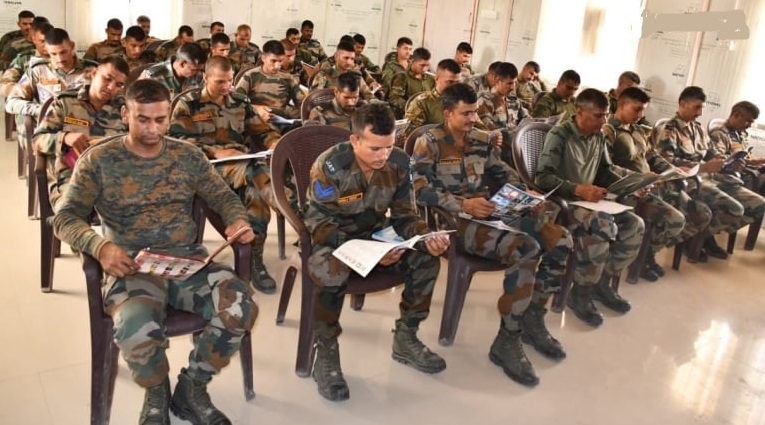 Agneepath Scheme replaced with Sainik Samman Scheme 2024, Defence Minister Rajnath Singh Relaunched Agniveer Scheme
Agneepath Scheme replaced with Sainik Samman Scheme 2024, Defence Minister Rajnath Singh Relaunched Agniveer Scheme
-
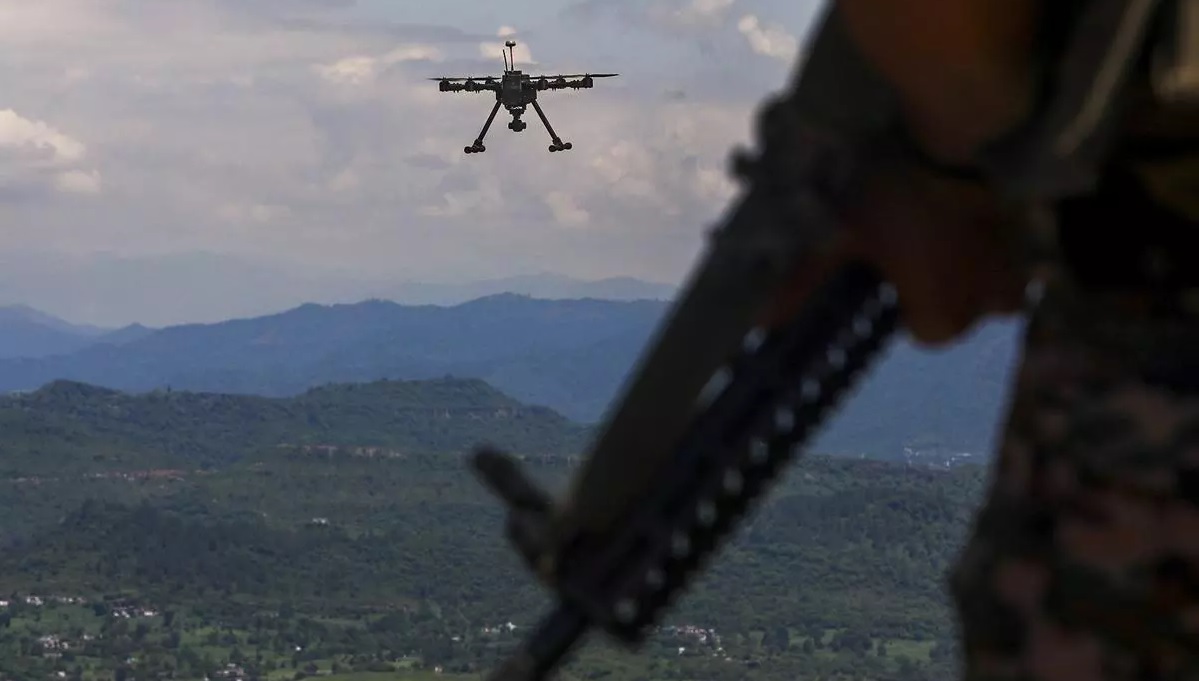 India's Defence Ministry Warns Against Chinese Parts in Military Drones Amid Security Concerns
India's Defence Ministry Warns Against Chinese Parts in Military Drones Amid Security Concerns
-
 China's Latest DF-31AG ICBM Test: A Strategic Leap in Global Missile Capabilities
China's Latest DF-31AG ICBM Test: A Strategic Leap in Global Missile Capabilities
-
 China’s Super Radar Detects Mysterious Plasma Bubble Over Giza Pyramids
China’s Super Radar Detects Mysterious Plasma Bubble Over Giza Pyramids
-
 Pakistan Announces 15% Increase in Defence Budget for 2024-25 Amid Economic Crisis
Pakistan Announces 15% Increase in Defence Budget for 2024-25 Amid Economic Crisis
-
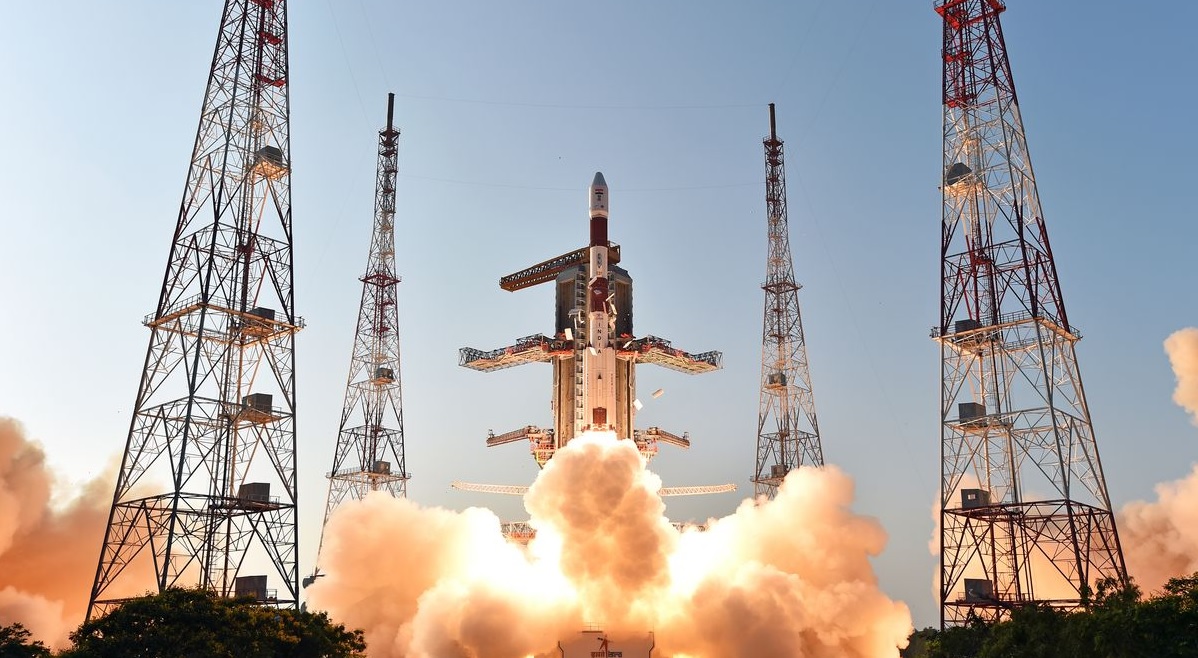 Isro Draws up Ambitious Plan for 2024, says will Launch at Least 12 Missions
Isro Draws up Ambitious Plan for 2024, says will Launch at Least 12 Missions
-
 India's Indigenous Kaveri Engine Program with New Focus on Thrust and Performance
India's Indigenous Kaveri Engine Program with New Focus on Thrust and Performance
-
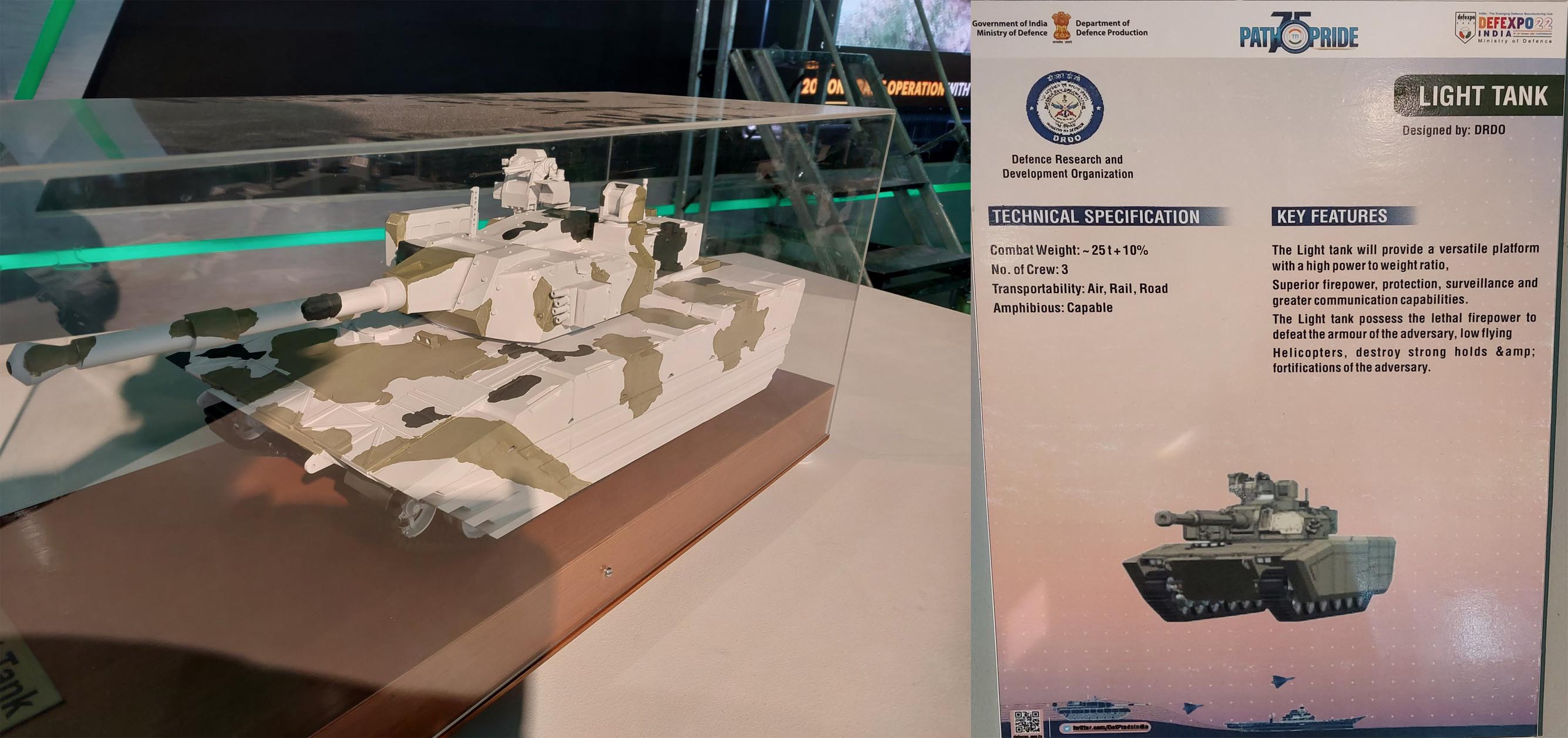 German Engines Available Now But India Chooses American Power Plants for Entire Zorawar Light Tank Project
German Engines Available Now But India Chooses American Power Plants for Entire Zorawar Light Tank Project
Top Trending in 4 Days
-
 Why India Opted for US LM2500 Engines Over Indigenous Kaveri and European Alternatives for Naval Ships
Why India Opted for US LM2500 Engines Over Indigenous Kaveri and European Alternatives for Naval Ships
-
 Mitsubishi Unveils AI-Powered Combat Drones to Transform Japan’s Defense Strategy
Mitsubishi Unveils AI-Powered Combat Drones to Transform Japan’s Defense Strategy
-
 Saab's Bold Gripen E/F Jet Offer: 3-Year Delivery and Full Technology Transfer for India's $20 Billion MRFA Deal
Saab's Bold Gripen E/F Jet Offer: 3-Year Delivery and Full Technology Transfer for India's $20 Billion MRFA Deal
-
 Indian Army Puts Future Warfare Technologies to the Test in "Swavlamban Shakti" Exercise
Indian Army Puts Future Warfare Technologies to the Test in "Swavlamban Shakti" Exercise
-
 True Anomaly and Firefly Aerospace Team Up for US Space Force Orbital Vehicle Trials
True Anomaly and Firefly Aerospace Team Up for US Space Force Orbital Vehicle Trials
-
 U.S. Allegedly Planned Arrest of India's Former R&AW Chief Samant Goel: Diplomatic Tensions Over Khalistani Plot
U.S. Allegedly Planned Arrest of India's Former R&AW Chief Samant Goel: Diplomatic Tensions Over Khalistani Plot
-
 Leaked Documents Unveil Israel’s Top-Secret Long-Range Surveillance Drone Program
Leaked Documents Unveil Israel’s Top-Secret Long-Range Surveillance Drone Program
-
 China Plans to Send Crewed Submersible to Bottom of Arctic Seabed
China Plans to Send Crewed Submersible to Bottom of Arctic Seabed
